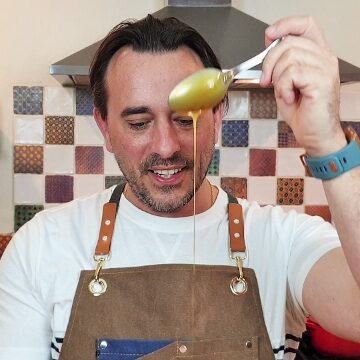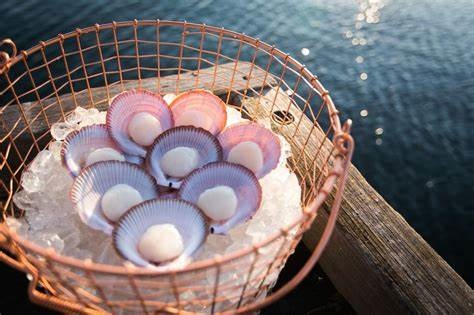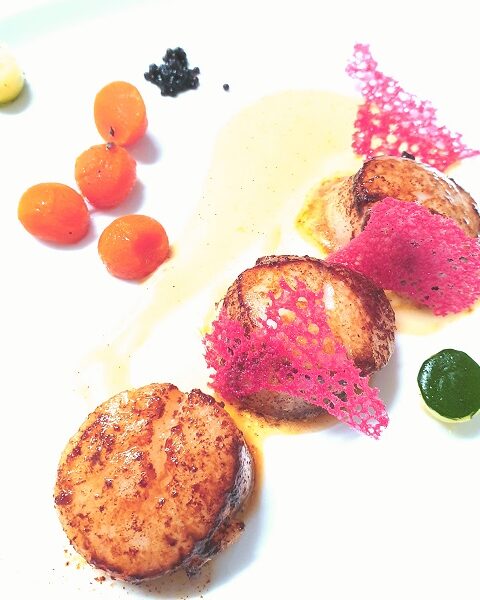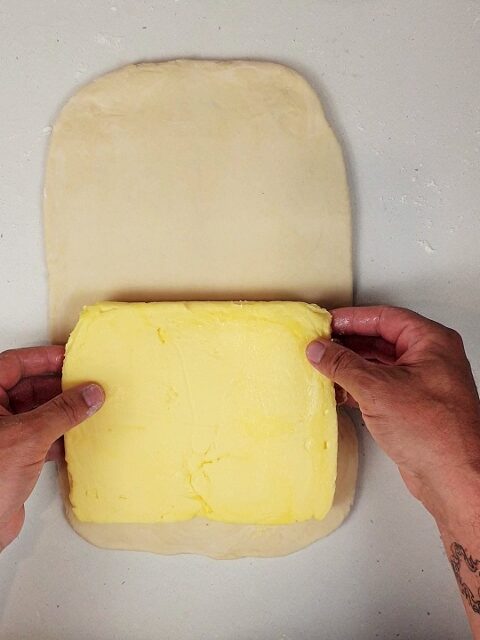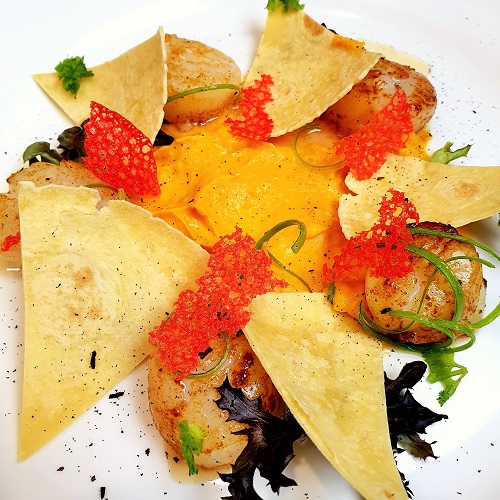
Happy festive season and I hope this will find you well and ready to gather around the table with friends, love ones, your pet(s) or just yourself.
So, I have been reflecting the last few weeks on how was Christmas dinner for me as a child. Yes, I said dinner because in France most people celebrate on the evening of the 24th and keep going on the 25th for a long lunch. Growing up in a modest working-class family, Christmas dinner was a time of opulence of food and delicacy. What I mean by that? It was a dinner that you look forward for the entire year. Most people can now afford produce like brioche, smoked salmon, foie gras, oysters, scallops, prawns and even champagne. But once upon a time in France tat was not accessible to a lot of people. So, Christmas’s Dinner was “epic”, an evening of gathering of family and friends where everyone was jolly, ready to feast on an amazing food and drink champagne.

As I grew up in Normandy (North west coast of France) most of my childhood and cooking years, I was exposed to prepare and cook a lot of fish and seafood a lot. We had daily supplies of fresh fishes, making our own smoked salmon weekly, and cooking scallops. I remember my grand-mother going to the port every 2 days and waited for my uncle (a fisherman) to bring on some fresh goodies. But one items we could only have at Christmas due to season availability and cost was fresh scallops.
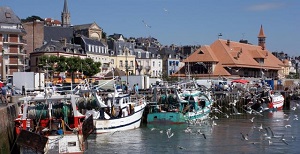
My Grand-ma and my mother used to get in the kitchen and clean the scallops just off the sea. They use to keep to prepare them as simple as possible. Cooked in a lot of hot butter, few cloves of chopped fresh garlic and just a handful of chopped parsley at the end, salt and pepper, and that was it. I am salivating just remembering the process, the sound of the butter, the buzz in the kitchen, the smell ohhhhhh the smell and the freshness of the dish. This was our Christmas Dinner Entrée.

Nowadays, and after many years travelling and cooking around the world, I have developed this recipe that I want to share with you. My entrée this year is this dish made of shark bay scallops, cooked with butter and seasoned with vanilla. I served it with a creamy sweet potato puree and cinnamon. I plate the scallops around the puree, add some leaves around coriander, beetroot, chicoree, coriander and a julienne of spring onion. The scallops are naturally sweet and salty so the vanilla just flaunt it a little more. The cinnamon in the sweet potato accentuate the natural flavour of the potatoes. The cream and butter just enriched the puree. The leaves give this dish and international melting pot of flavours that just embrace one another. The corn tortilla just gives the dish another dimension in term of texture and bring you to satiety. This dish is a true sentiment of my childhood with memories of my travelling and professional career.
To be directed to the recipe, click on the link below. You can adjust the numbers of guest and the recipe will be automatically updated. Then, you just need to print it and go shopping.
I really hope you enjoy it as much as I do. As I wish you all a wonderful festive and end of the year Season.
Frenchy (David)
What about our local scallops? Today i will write about the shark bay scallops and another time about the one from Rottnest
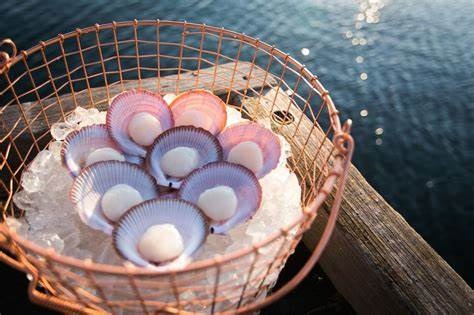
A scallop is a bivalve – a mollusc with a hinged shell. Several species occur off the coast of Western Australia but only the southern saucer scallop (Amusium balloti), is abundant enough to support a commercial fishery. In the southern saucer scallop, the lower valve is white while the upper valve is pink/brown. It can grow to 14 cm in length.
Scallop meat is a delicacy and in demand on local and international markets, creating a lucrative industry for WA scallop fishers.
Some scallop species can swim. The southern saucer scallop is an active swimmer, which affects the fishing method used – these scallops are trawled rather than dredged.
Although they settle on the bottom, the fishing gear disturbs them and they swim upwards, which is when they’re caught in the net.
Scallop stocks can vary greatly annually depending on environmental factors. We work closely with the industry to monitor stocks to predict where and when to catch scallops.
Distribution and habitat
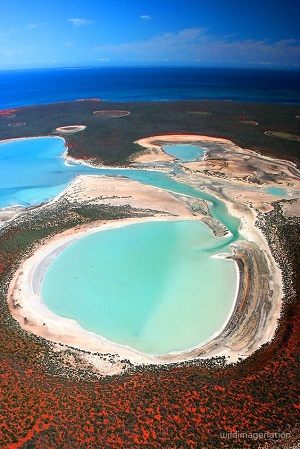
The southern saucer scallop is found off the coast of WA between Broome and east of Esperance (as far as Israelite Bay). It occurs in greatest numbers in Shark Bay and the Abrolhos Islands. It lives where the ocean floor is sandy and often in sheltered environments found in bays or the lee of islands and reef systems.
Lifecycle
The Southern saucer scallop can live for up to three years.
In Shark Bay (where the State’s biggest scallop fishery is based) scallop spawning occurs between April and December.
Eggs and sperm are released into the water and fertilisation takes place externally.
Tiny veliger larvae hatch from the fertilised eggs. During this period, larvae are passively transported by tides and currents. Generally scallops have a larval phase of 12 to 24 days.
After this time they settle to the bottom. Once settled, the tiny juvenile shells, known as ‘spat’, grow into juvenile scallops. By nine to 12 months of age, they are mature enough to spawn, and the lifecycle begins again.
Most scallops from one year’s spawning reach fishable size (shell length of about 90 millimetres) by April of the following year.

In WA, the Leeuwin Current carries warm water southward and influences coastal fisheries. While the relationship is not completely understood, in years when the Leeuwin Current flow is strong, scallop recruitment (addition of young scallops to the overall population) in Shark Bay is low, and vice versa. The effect may be caused by currents flushing scallop larvae out of the bay.
Diet
Scallops feed on minute plants and animals that they strain from the water by a filtering mechanism involving the gills and cilia.
Predators and parasites
Scallops are eaten by pink snapper, loggerhead turtles, rays, octopus, crabs and sea stars. A nematode worm sometimes infests scallops and although it presents no danger to humans, it can lower the value of scallops by ruining the appearance of the meat in older animals. However, if scallops are caught at the optimum age (about a year old) risk of worm infestation is almost eliminated.
